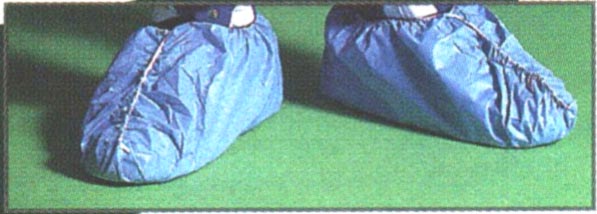Understanding ISO Standards for Cleanrooms
Leave a CommentAlthough the revised ISO cleanroom standards have been in place for quite some time – well over 10 years, in fact – there remains the potential for confusion over terminology and nomenclature. In addition, it’s also important to keep in mind that, as with any specification or measurement, there are limitations with these standards.
As a quick refresher, what exactly are the ISO standards and what do they mean? ISO 14644-1 classification of air cleanliness and ISO 14644-2 deal with particle size and particle count, 
On to the more important point: what are the limitations of these cleanroom measurements? They require less information about the cleanroom than Federal Standard 209 did, and allow for fewer tester locations for cleanliness. The ISO standards establish 0.1 micron as the standard particle diameter, create three new cleanliness classes, and aren’t as concerned with airflow velocity, room pressure, room temperature, and the distance from the floor or the filter face when taking an air sample for a particle count. This variability can lead to fluctuations in particulate levels and thus, in ISO classifications.
Because of these limitations, it’s important to be aware of at what state testing was done: at rest, as built, or in operation, and to keep all factors in mind. When you work with Liberty for your cleanroom needs, you can be sure you’re dealing with experts who know exactly what makes for the best possible cleanroom. You can trust that we are aware of everything that’s crucial to the process, and know your cleanroom will be the best possible.
Clean Film Packaging Tips
Leave a CommentAnyone who uses a cleanroom knows that the process doesn’t end there. Items built in a contaminant-controlled environment need to be shipped and kept in a contaminant-controlled environment. Clean film packaging provides the answer to this problem, applying the same standards of cleanliness to the packaging as to the end product. Clean film packaging can either be purchased to meet certain requirements, or, with the proper expertise, existing film can be cleaned within a cleanroom. Standards to be met take into account airborne particles, humidity, and temperature control, among others. With the right procedures, clean film packaging can also be a very sustainable, “green” way of packaging cleanroom products. Read on for more.
As you might have guessed, there’s no standard film that can satisfy all requirements. What are the steps in choosing and using the proper clean film packaging? Liberty Industries can help you:
Material Selection: Strength, thickness, and static properties are characteristics to consider, as are more intricate aspects like gas and vapor barrier, film density, and sloughing (shedding plastic particles). Common materials are UCF-POLY, Nylon 6, and ACLAR.
Proper Handling: It’s important to be aware of the clothing beneath your cleanroom garments, and the limitations of the garments – and of antistatic agents for the film. The safest method is just to keep clean film packaging as far away as possible from your person. When trimming or opening the packaging, stainless steel scissors should be used, pushing through the material (rather than chopping) for the cleanest cut possible.
Testing: Ensure that thorough and proper testing is carried out to be confident that the packaging can keep the internal environment free of forbidden particulate matter.
Stay “Green:” As we mentioned above, clean film packaging can be cleaned and reused several times, provided the right facilities and cleaning equipment are available, such as cleaning fluid, electrostatic eliminators, and final processing machinery. In addition, proper recycling procedures should be followed with the plastics once they are discarded, further ensuring that sustainability protocols and goals are met.
For a full and detailed testing procedure, and more information on clean film packaging, be sure to visit this page.

